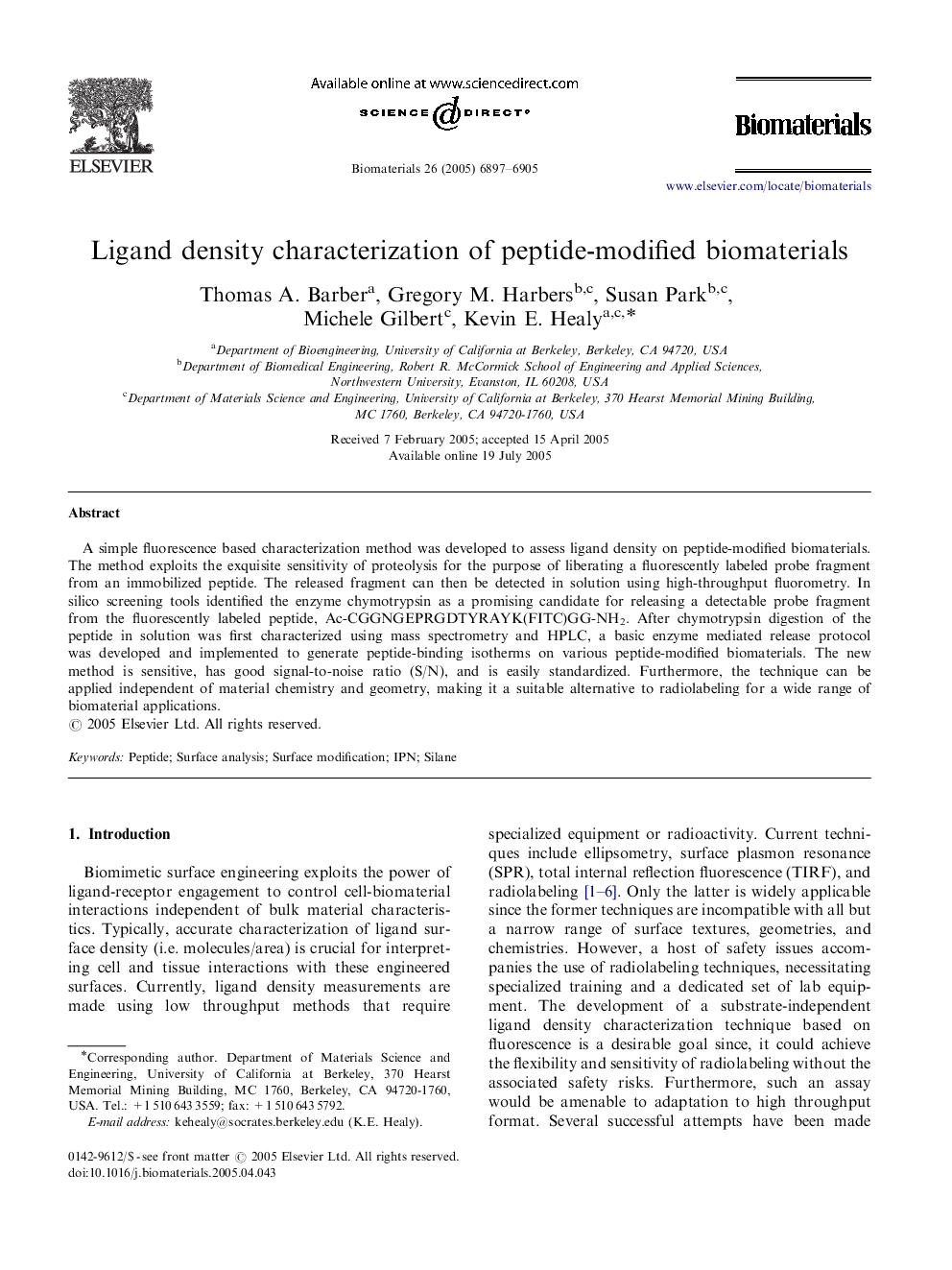| Article ID | Journal | Published Year | Pages | File Type |
|---|---|---|---|---|
| 12447 | Biomaterials | 2005 | 9 Pages |
A simple fluorescence based characterization method was developed to assess ligand density on peptide-modified biomaterials. The method exploits the exquisite sensitivity of proteolysis for the purpose of liberating a fluorescently labeled probe fragment from an immobilized peptide. The released fragment can then be detected in solution using high-throughput fluorometry. In silico screening tools identified the enzyme chymotrypsin as a promising candidate for releasing a detectable probe fragment from the fluorescently labeled peptide, Ac-CGGNGEPRGDTYRAYK(FITC)GG-NH2. After chymotrypsin digestion of the peptide in solution was first characterized using mass spectrometry and HPLC, a basic enzyme mediated release protocol was developed and implemented to generate peptide-binding isotherms on various peptide-modified biomaterials. The new method is sensitive, has good signal-to-noise ratio (S/N), and is easily standardized. Furthermore, the technique can be applied independent of material chemistry and geometry, making it a suitable alternative to radiolabeling for a wide range of biomaterial applications.
